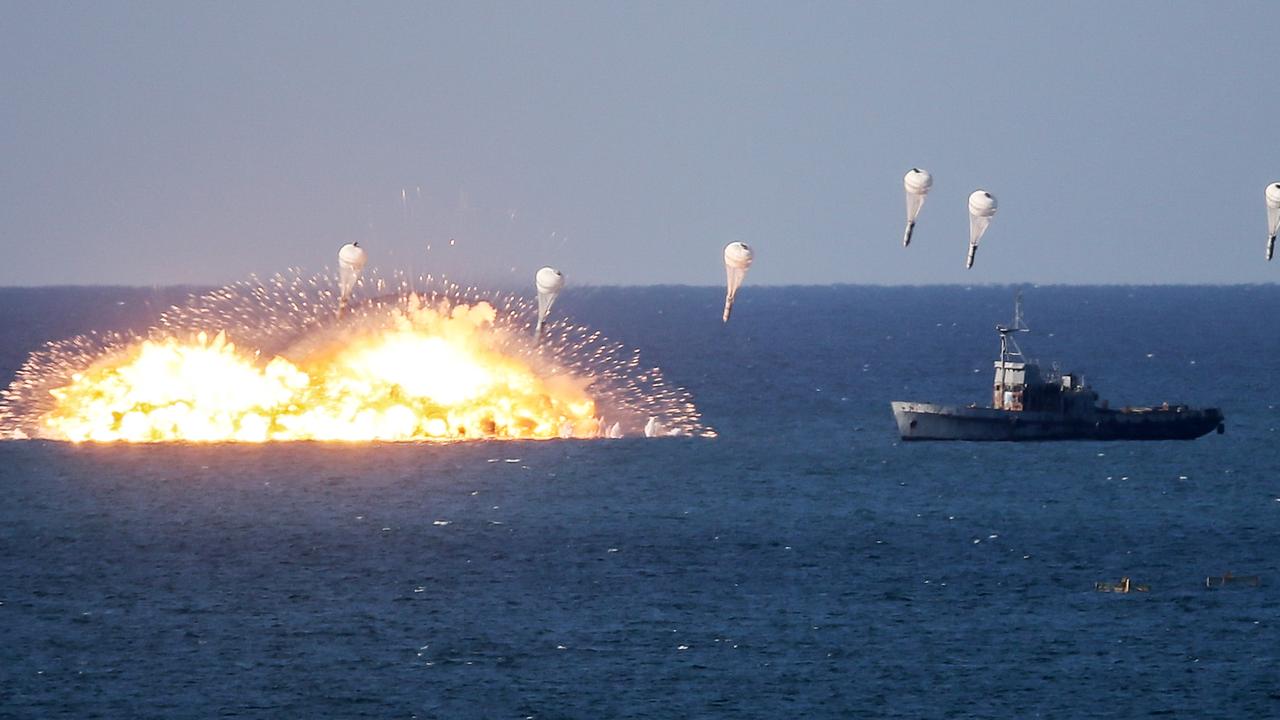Russia Enhances “Shahed-136” Combat Drones with Thermobaric Explosives
Ukrainian military officials express concern due to the heightened danger posed by the "Shahed-136" combat drone equipped with Thermobaric explosives. This heightened danger is attributed to the increased explosive power generated by Thermobaric bombs compared to conventional explosive devices.
(DEFENCE SECURITY ASIA) — Russia has reportedly undertaken measures to augment the capabilities of the “Shahed-136” combat drones, provided by Iran, by integrating it with Thermobaric explosive payloads, which are noted for their increased lethality compared to the conventional explosives previously employed by the drone.
Military officials in Ukraine state that the Shahed-136 drone equipped with Thermobaric explosives is more dangerous due to the explosive power it generates compared to the conventional explosives used.
On December 3rd, images circulated on Ukrainian social media depicting military officials discovering Thermobaric explosives attached to the Shahed-136 combat drone.
Thermobaric explosives also called “Vaccum Bomb”, made of fuel, allow for the generation of more energy upon detonation, causing significant destruction to targets compared to other explosive devices.
Thermobaric explosives are frequently utilized by military planners to destroy underground bunkers and enemy troop hiding places, as well as for bombing structures.

Thermobaric bombs can be dropped from aircraft or launched as rockets, and upon impact, they create explosions resembling an “fuel cloud,” potentially killing individuals hidden in underground bunkers.
Ukrainian military officials express concern that Thermobaric bombs have a high explosive power and could endanger Ukrainian civilians.
They note, “The explosion of a small Thermobaric bomb is sufficient to bring down large buildings.”
Reports about Russia enhancing combat drones with Thermobaric explosives are deeply troubling to Ukrainian military officials, especially as Russia intensifies its attacks using combat drones on Kiev military positions and infrastructure.
In a major drone attack on the capital, Kiev, Russia reportedly deployed 75 “Shahed-136” drones in a single night against Ukrainian military positions and key infrastructure, including power plants and other facilities.
In what is characterized as Russia’s largest combat drone attack on Kiev, Ukrainian forces claim to have successfully shot down 71 out of the 75 “Shahed-136” combat drones.

Russia is reported to have started using Iranian-supplied combat drones, such as Shahed-131, Shahed-136, and Mohajer, to target various sites in Ukraine, including buildings and public infrastructure such as power plants and oil storage facilities.
Despite the low accuracy of these Iranian-made combat drones, they have successfully “intimidated” both Ukrainian military personnel and the general public from a psychological perspective.
Iran has also been credited with assisting Russia in building its own combat drones in the city of Yelabuga, Tatarstan, located south of Moscow.
Technical assistance from Iran enabled Russia to establish a production facility for the “Shahed” combat drones in Yelabuga.

Despite being nicknamed “moped” or “scooter” due to its loud noise, the Shahed-136 combat drone developed by Iran Aircraft Manufacturing (HESA) has a range of between 1,000 km to 2,200 km.
At the tip of the combat drone is a 50 kg explosive payload.
The Shahed-136 has an overall length of 3.5 meters, weighs 200 kg, and is powered by a Chinese-made engine, allowing the Iranian combat drone to fly at a speed of 185 km/h. — DSA

DEFENCE SECURITY ASIA APPS
To advertise contact: haikalhamas73@gmail.com

